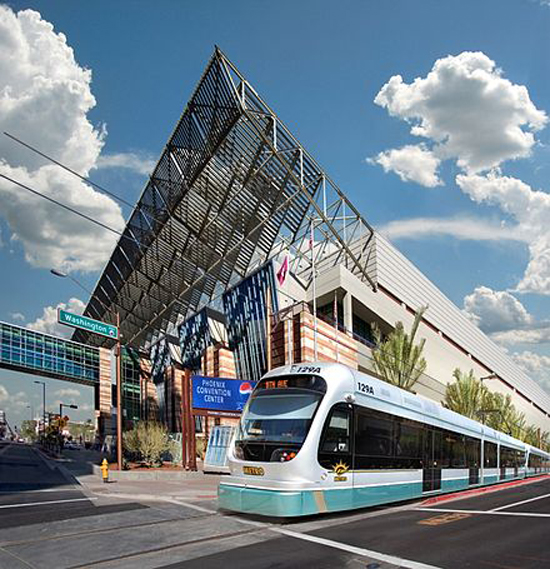

The automated train system now connects the 44th Street and Washington Street light-rail stop to Terminal 3 and Terminal 4. The first phase of the PHX Sky Train opened in 2013 to connect the light-rail system to Phoenix Sky Harbor International Airport. The automated PHX Sky Train system now connects the 44th Street and Washington Street light-rail stop to Terminal 3 and Terminal 4. The starter line has been extended twice - 3.1 miles through downtown Mesa along Main Street to Mesa Drive in 2015 and 3.2 miles in Phoenix to 19th Avenue and Dunlap Road in 2016.

27, 2008, ran from Phoenix's Christown Mall in the west to Main Street and Sycamore Drive in Mesa. The 20-mile starter line, which opened Dec. Reflecting today, Hawker said "it did prove out to be positive." Growing the line "I'm pretty conservative and typically for government programs I'm not a big backer, but it was pretty well understood that Phoenix and Tempe were building the light rail and if Mesa did not join, it was going to stop two miles from Mesa's border in Tempe," Hawker said. Years earlier, the conservative suburb passed a Quality of Life tax, which included a small set-aside for public transportation, but the city had not committed to use it for light rail.įormer Mesa Mayor Keno Hawker persuaded the council to pay to bring 1 mile of light rail into the city so future politicians could decide whether to extend it further. With Phoenix and Tempe on board, Mesa had to decide whether it would fund the end of the line to the East.

Phoenix had two failed transit initiatives, with one losing by 22 votes.īut in 2000, Phoenix voters approved a 0.4 percent sales tax to fund light rail and other public transportation projects.įour years later, Maricopa County voters extended a countywide half-cent transportation tax, about a third of which has gone toward light rail and other public transportation projects. Tempe voters passed a half-cent sales tax for buses and light rail in 1996, putting pressure on Phoenix to catch up with the East Valley suburb. Without a regional transit tax, each city was left to come up with money on its own. Voters across Maricopa County defeated the $8 billion proposal by nearly a 2-to-1 ratio in 1989, sending transit proponents back to the drawing board. The project would have connected the entire Valley with 100 miles of elevated tracks. The first iteration of light rail, dreamed up in the 1980s, was an even grander and pricier plan called ValTrans.


 0 kommentar(er)
0 kommentar(er)
